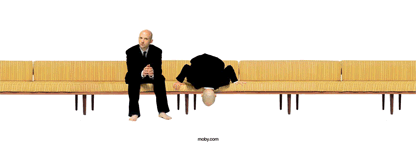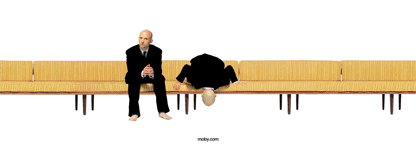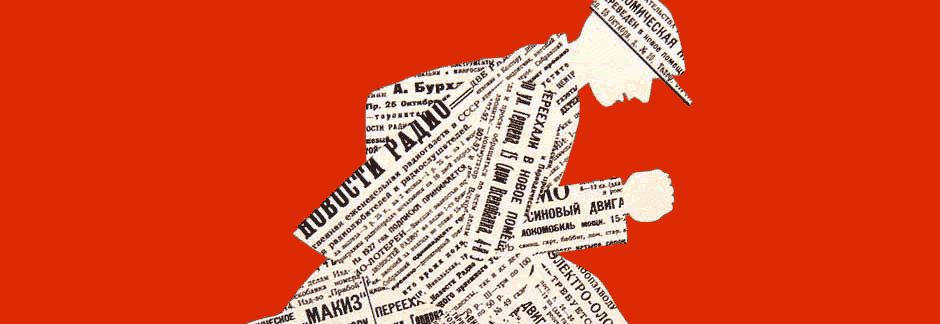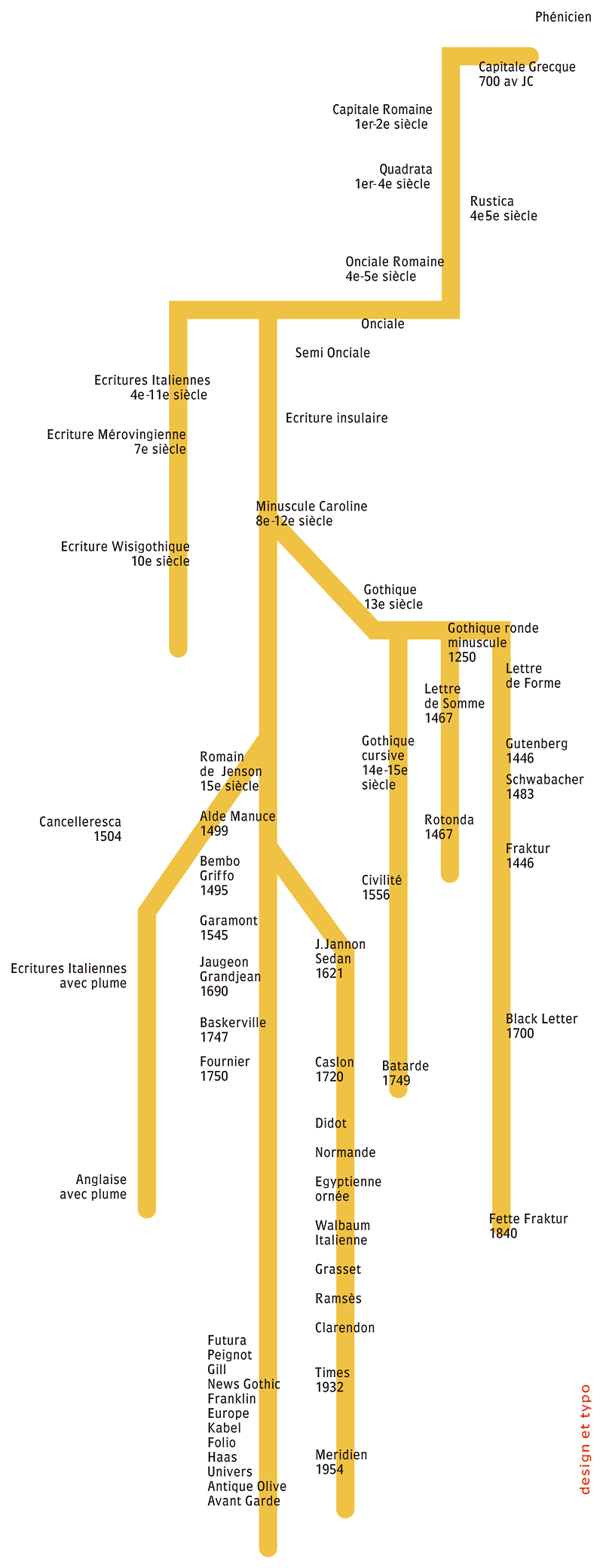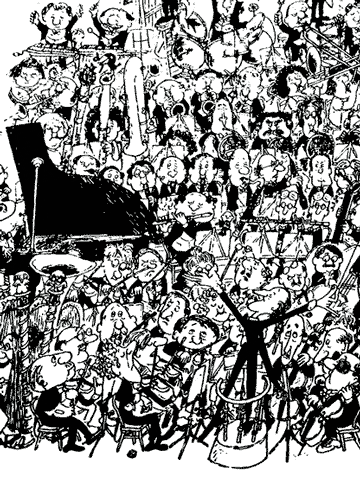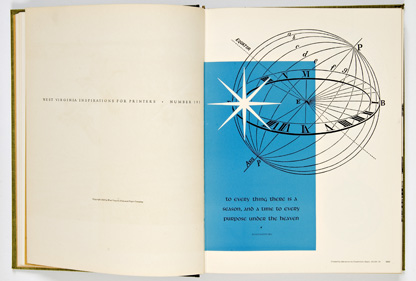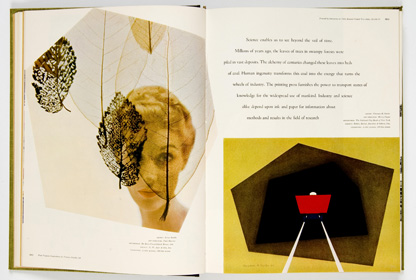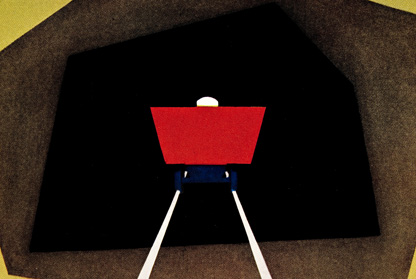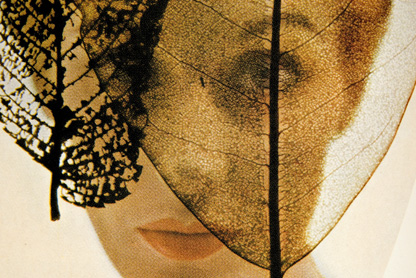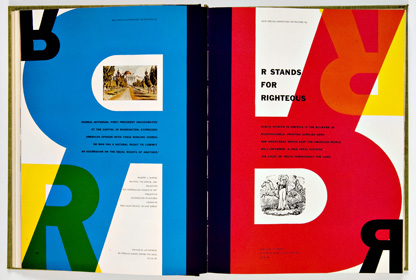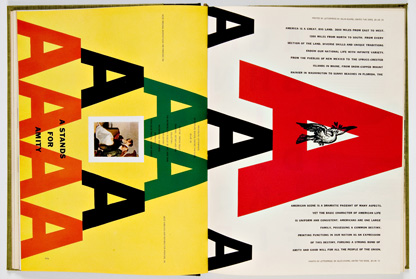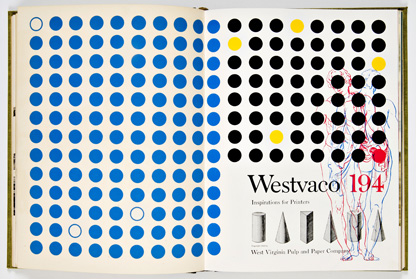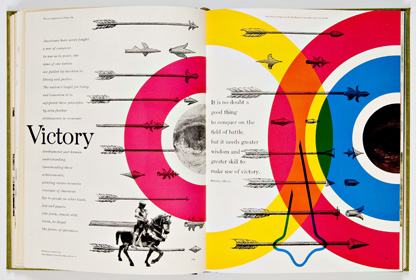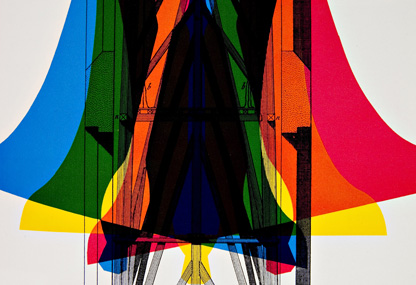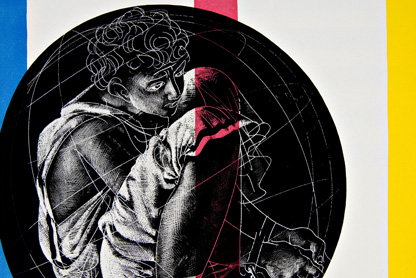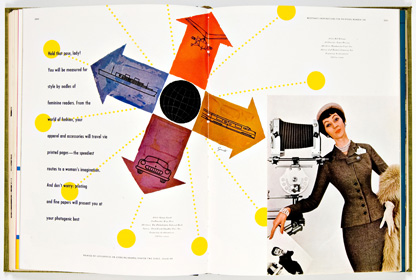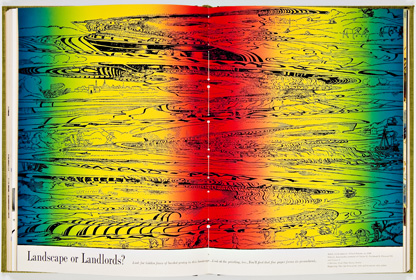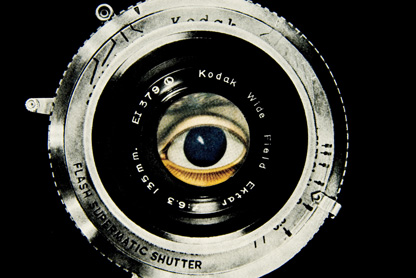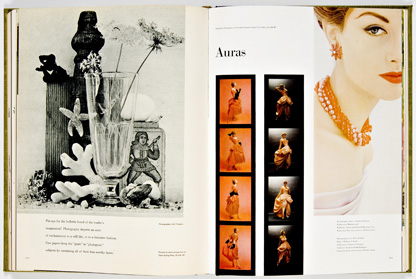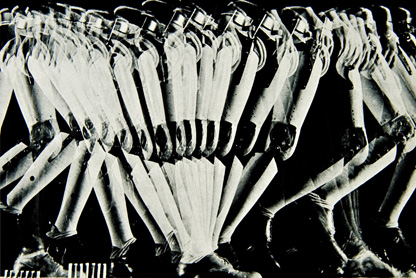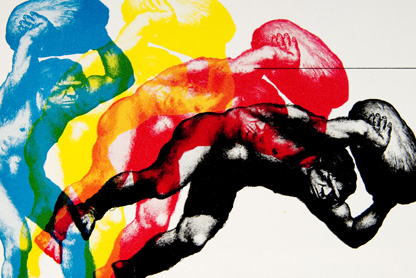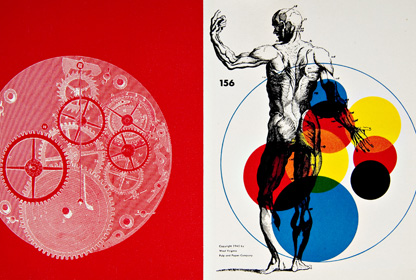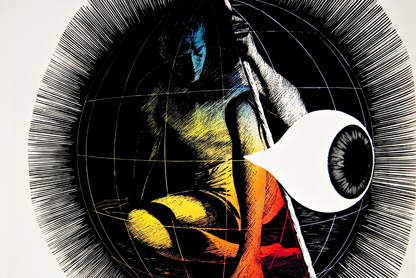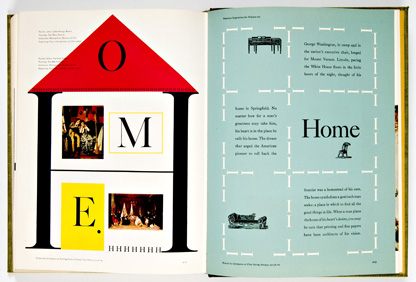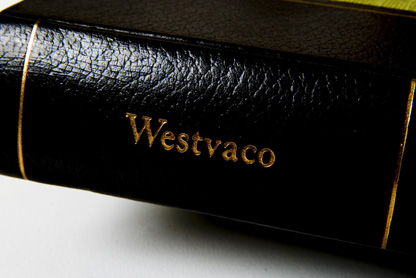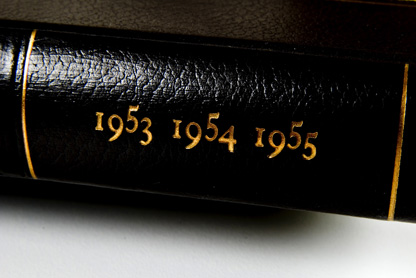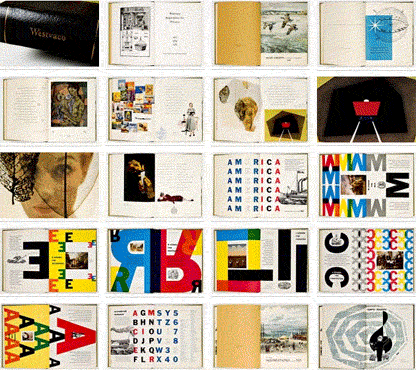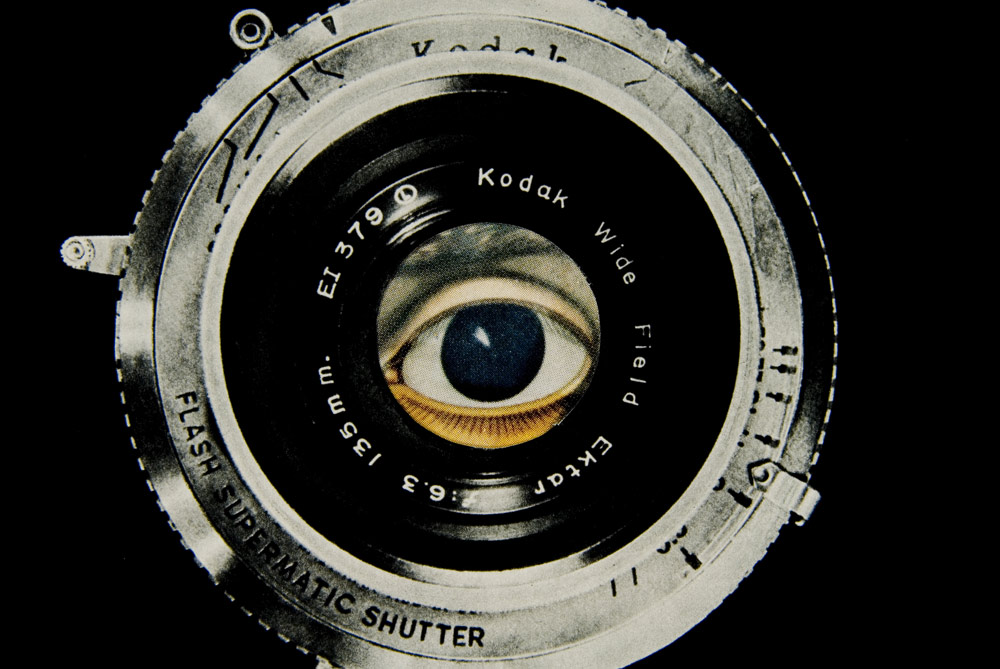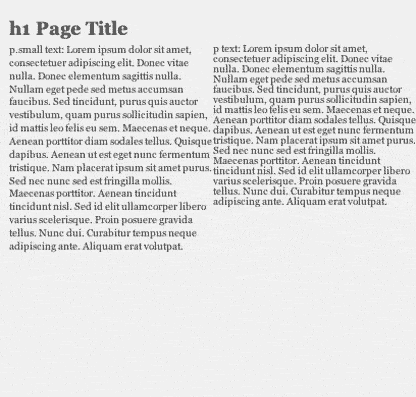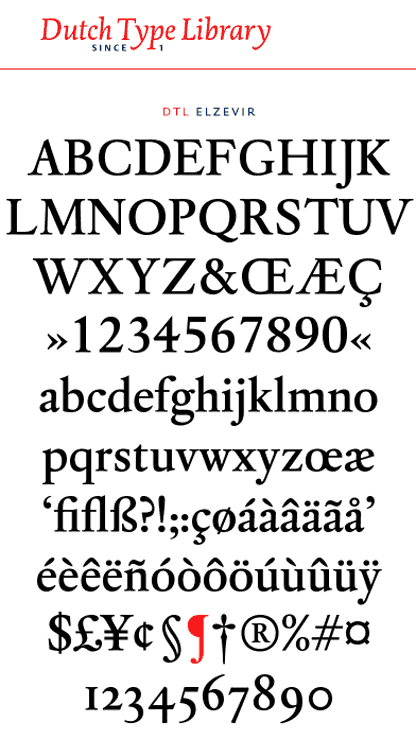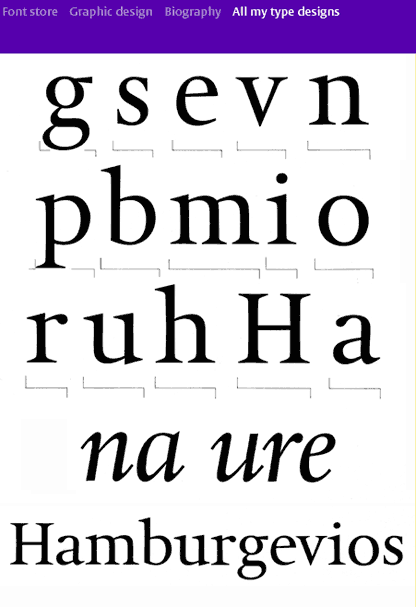J’avais découvert ce coup de gueule d’Hermann Zapf, un des typographes les plus intègres de la communauté des type designers sur le site de Velvetyne . Je connaissais ses prises de position pour avoir eu affaire à sa vindicte toute légitime lorsqu’il découvrit son Optima dans un catalogue typoGabor qui était en fait le Musica d’Alphatype, fonderie américaine qui fabriquait des machines et digitalisait à tour de bras des polices dont ils ne payaient pas forcément les droits de copyright. Perso je n’y pouvais à l’époque pas grand chose, mais lorsque j’ai personnellement tenté de lancer ma propre fonderie en négociant en pure perte avec Linotype (alors qu’ITC m’avait déjà donné leur accord de commercialisation), j’ai compris à mes dépens les difficultés de lancer sa propre fonderie de caractère sans avoir le soutien des Fonderies propriétaires. Le manque d’esprit commercial de Linotype à l’époque me conduisit à abandonner mon projet. C’est sans doute une des raisons qui déterminèrent plus tard la création de tant de *similar too* dans tout le landernau de la typographie internationale.
HAS TYPE DESIGN ANY FUTURE? Call for Foundation of a « Sir Francis Drake Society » by Hermann Zapf (Copyright (c) 1994 by Hermann Zapf)
« Among people, there are more copies than originals. » – Pablo Picasso
Author’s note: « …the same applies to typefaces. »
It’s high time to establish a « Sir Francis Drake Society. » A contemporary of Claude Garamond, Sir Francis Drake lived from 1540 to 1596. He already has many devoted followers and admirers in the graphics industry. Large software companies and type designers in the digital era will welcome Sir Francis Drake as their patron. In 1581 Queen Elizabeth knighted him for his achievements and later he was elected member o the Parliament.
Let’s bring Sir Francis Drake’s life back to the minds of those not familiar with his daring deeds. In the 16th century, Francis Drake was a relentless pirate who took hold of everything he desired. Aren’t we – living in the 20th century – confronted with similar actions in the field of type design, owing to the fact that type designers in all countries suffer from a lack of copyright protection for their work and their property? There are a number of pirates raising the Jolly Roger everywhere, but when ashore they attend large-scale conferences where they claim to devote themselves to the colors of honorable shipping companies.
Something happened in September 1993 in the harbor city of Antwerp. The Association Typographique Internationale had a conference and talked about an « Anti-Piracy Campaign. » Some firms had become angry about the illegal copies of their software, a loss of income of millions. Mac and PC users should buy only original software and no cheap copies. Such font software are alphabets, which means the creative work of type designers. These designers also feel originals should be sold, and no copies.
Recently, to the other existing copies of my Palatino sold under obscure names, a new poor copy was done, named « Book Antiqua » and sold to a giant software firm. They used their own copyright on the diskettes and under « All rights reserved. » What rights are left to the originator? I had no information, no possibility to make corrections, and of course have received not a cent for royalties. Such big software companies should have the best Palatino for their customers and not a copy.
The firm producing this « Book Antiqua » was a speaker of the « Anti-Piracy Campaign. » This caused me to resign in Antwerp as a founding member of ATypI after 36 years. This organization was established in 1957 by Charles Peignot to protect internationally the creative work of type designers and also of type founders. Great names had been connected with ATypI in its history – personalities like Beatrice Warde, Stanley Morison, Giovanni Mardersteig, Willem Ovink, Roger Excoffon, Georg Trump, etc.
Even in business there are some rules! You can’t steal apples from your neighbor’s orchard and sell them as your own product at the market to get money. Even if your neighbor has no fence around his property, it is not allowed, for we are living in a civilized country. Apples are apples and alphabets are alphabets is a simple answer. But we know there are all kinds of apples with different brands and there are also different typefaces – some with names like Palatino and Optima. The situation with typefaces is: They have no fence by copyright law.
Another example perhaps for the U.S. Copyright Office is this. A picture taken with a cheap camera by an amateur in 1/1000 of a second has at once the backing of the international copyright. But there may be in the future some new legal questions arise by taking from a TV set pictures for commercial use without permission, eventually to manipulate, or by cropping essential parts or changing details electronically. The newest electronic visual systems are producing pictures with a video-printer in seconds. These people don’t think about what they are doing with images of a pretty blond or of a famous sports hero. Nobody would copy a record of Leonard Bernstein’s « West Side Story » and sell it under another copyright.
Nobody can make a reprint of a work of literature with a new title by changing the author’s name. A typeface is sometimes the result of developments over years – e.g. Optima from 1952 to 1958 – and at the end is the creative work of a designer without any protection against copying.
But a logo done of a few letters of an existing alphabet has the backing of a trademark or copyright like « expo67 » for the exhibition in Montreal in Optima. Or take the IBM logo – three letters of Georg Trump’s typeface « City Bold. » On the other hand, the complete alphabet has no international protection at all.
The manipulations of original drawings of artists will become more and more a common procedure, and some will wake up when such people discover that their own work was used or copied to fill the pockets of someone else.
Some contemporaries expect a type designer to work for nothing – as a crusader or pioneer in the battle against illiteracy – with all his simple heart in a social engagement – but at the end to feed big companies. In short: this is making profit with the intellectual property of others.
I doubt that lawyers are helping people in the sad situation of a poor man, out of a human feeling for him, working for nothing, paying out of their own pocket the expenses of employees and others.
But in the case of a type designer, it is all right to get not a nickel for distribution rights of a creative work.
Copyists have no risk in the manufacturing and promotion of a successful typeface. It is so easy under the existing laws to take creative artwork for nothing, without authorization, not mentioning the source. It looks to the user as he buys the developments that he is compensating the firm’s investment of research and developing.
We have an inflation of alphabets in these days – a lot of new and fresh ideas but also many bad designs. Too many, you may say. But you can be sure the acceptance of some of these creations will be corrected by the market. As in the past, only the good design will stand. Many of this ephemera will soon be forgotten and, no question, nobody will copy these alphabets.
Type reflects trends and developments like any other artistic activity. They follow fashion streams. This is not so much in text faces, for our eyes are still the same as in Gutenberg’s time. But in display type, the design must be attractive enough to catch the attention of the reader of an ad. Here is still an interesting field for new ideas.
Today less neutral or anonymous alphabets are wanted, but more individual interpretations, some with a pronounced personal hand. In addition, the computer is now entering the creative area – the absolute domain of a designer in the past. With a PC and the possibility of morphing, it is possible to get new solutions which never existed before. Such developments are welcomed and have many positive aspects – as long as they are not getting into the hands of the pseudo-designers.
The danger for the future is the endless possibility of manipulating existing alphabets and to sell them as one’s own creations. In a few years we will have a complete bastardization. It will be hard to identify what is an original alphabet and what is a modified and miserable botch for the ordinary reader – and yes, even the so-called experts – who don’t see the tiny little differences in the small reading sizes.
(Previously published as an editorial in Calligraphy Review, Vol. IX, No. 1, 1994, and in the Bulletin of the Typographers International Association, February, 1994.) (via Velvetyne)
No comment
